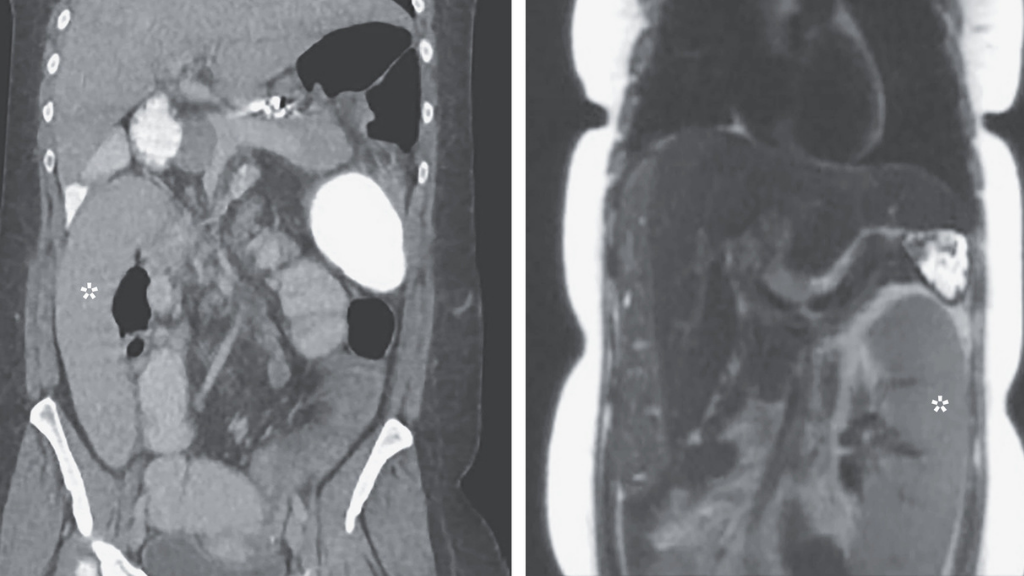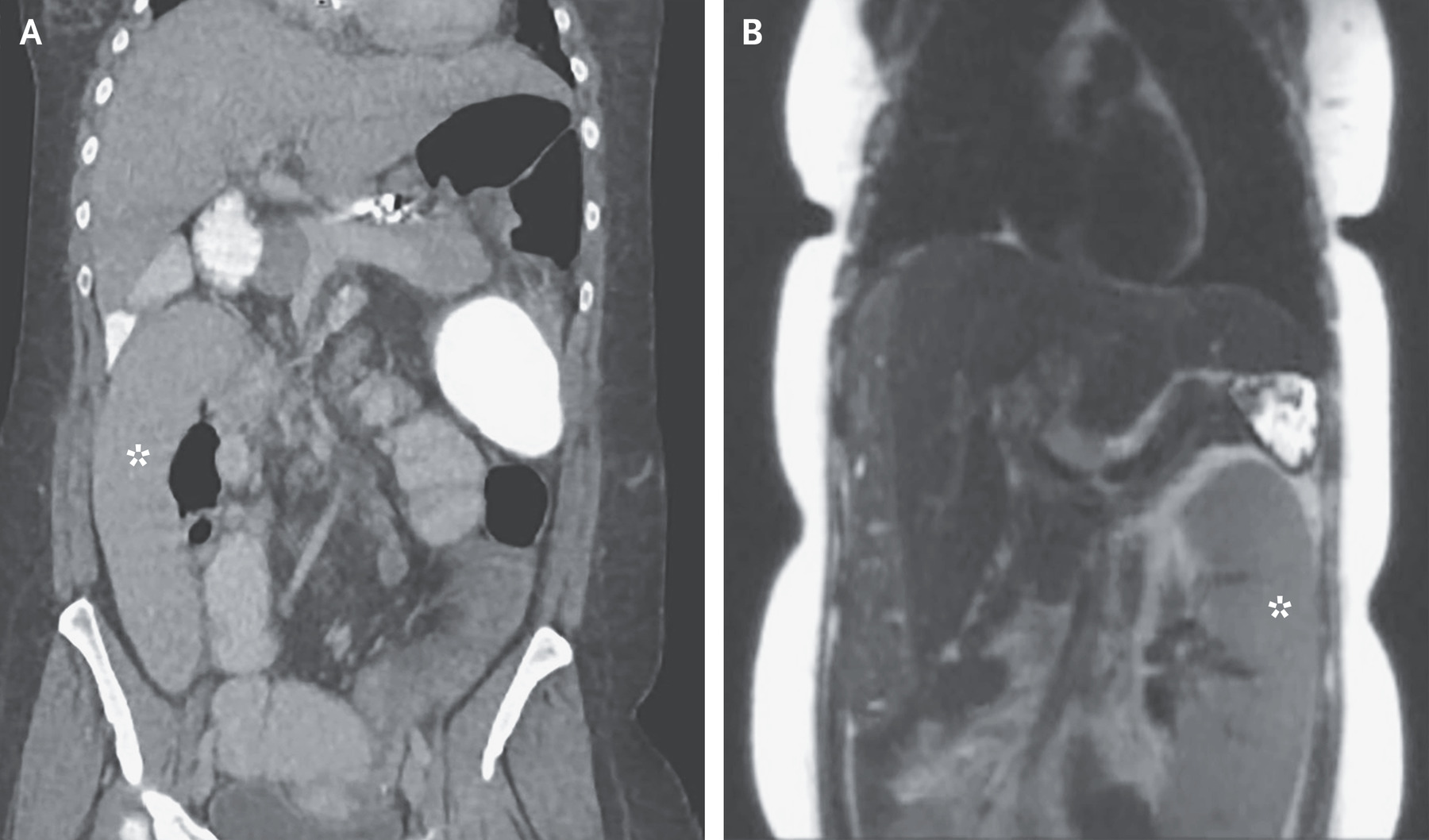Woman's stomach pain turns out to be rare case of 'wandering spleen'

A woman who went to the emergency department with abdominal pain soon learned the source of her discomfort: Her spleen had shifted about a foot out of place, according to a new report of the case.
This rare condition, known as "wandering spleen," occurs when ligaments that normally hold the spleen in place become loose and stretched out. The spleen, which filters blood in the body and produces immune cells, typically sits above the stomach in the left upper quadrant of the abdomen.
But when the 36-year-old woman showed up at Michigan Medicine in Ann Arbor, her doctors found her spleen in the right lower quadrant of the abdomen, instead.
"It traveled approximately 1 foot [0.3 meters]," Dr. Alexander Wester, a resident physician in internal medicine at Michigan Medicine, told Live Science in an email. Wester and Dr. Ivan Co, an emergency medicine doctor and assistant professor at Michigan Medicine, described the case in a paper published Nov. 18 in The New England Journal of Medicine.
Related: 12 amazing images in medicine
Just two days before learning about her wandering spleen, the patient had undergone a screening for liver cancer, during which doctors took medical images of her abdomen and saw her spleen sitting in its appropriate place. A day later, the woman began to experience abdominal pain and vomiting.
At the emergency department, doctors took new scans, and in that space of time, her spleen had traveled to the complete opposite side of her body.
Sign up for the Live Science daily newsletter now
Get the world’s most fascinating discoveries delivered straight to your inbox.

But why did the woman's spleen wander in the first place? The movement likely stemmed from her liver, which connects to the spleen through a system of veins.
The woman had a liver condition called primary sclerosing cholangitis, a progressive disease marked by inflammation in the bile ducts that carry digestive liquids from the liver to the small intestine, according to the Mayo Clinic. This inflammation caused severe liver scarring, known as cirrhosis, making it difficult for blood to flow through the organ, Wester said.
"Much like a clogged pipe, this causes blood to back up, and one of the places it backs up is the spleen," he said. "Over time, the spleen gets larger trying to accommodate all the extra blood." As the spleen gets bigger, the ligaments surrounding it can get stretched out, allowing the spleen to escape its proper place in the upper abdomen. Thus, the wandering.
Related: 7 weirdest medical conditions
Wandering spleen can also be caused by congenital conditions, where babies are born with weak or missing ligaments that would normally stabilize the spleen, according to the National Organization for Rare Disorders. The condition can also arise in adulthood through physical trauma or other conditions that can weaken the ligaments near the spleen, such as connective tissue diseases or even pregnancy.
The biggest danger of leaving a wandering spleen untreated is known as splenic infarction, Wester said. "There are blood vessels that travel near the spleen that can become twisted and cut off blood supply to the spleen," he said. "This can cause severe pain and even death if untreated." The pancreas, which produces hormones and digestive enzymes, is also connected to the spleen via blood vessels and can become inflamed when the spleen wanders out of place.
The best treatment for wandering spleen is to simply have the organ removed. "You can live without an intact spleen, and most patients should get their spleen removed if they have this condition," Wester said.
However, the patient was being evaluated for a liver transplant at the time, and Wester noted that the potential complications of undergoing a splenectomy could undermine her candidacy for a new liver. Additionally, if and when the patient qualified for a new liver, both the transplant and spleen removal could take place at the same time, he added.
So the patient's splenectomy was deferred to some time in the future. In the meantime, she was given "pain-control treatment and hydration, and her abdominal pain and vomiting resolved," according to the case report.
Originally published on Live Science.

Nicoletta Lanese is the health channel editor at Live Science and was previously a news editor and staff writer at the site. She holds a graduate certificate in science communication from UC Santa Cruz and degrees in neuroscience and dance from the University of Florida. Her work has appeared in The Scientist, Science News, the Mercury News, Mongabay and Stanford Medicine Magazine, among other outlets. Based in NYC, she also remains heavily involved in dance and performs in local choreographers' work.










